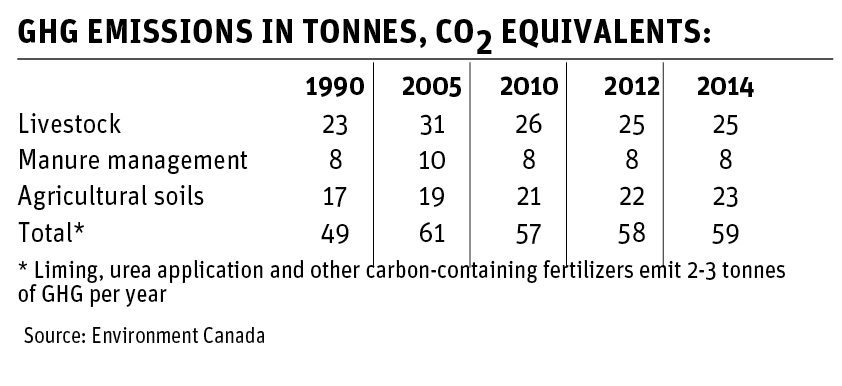In 2014, animal and crop production generated 59 tonnes of greenhouse gas emissions in Canada — that’s eight percent of all emissions.
If energy use such as burning diesel fuel is included, agriculture contributes about 10 percent to Canada’s total GHG emissions.
It’s transportation that contributes the most to GHG in Canada (28 percent), followed by electrical /heat generation (14 percent.)

Cattle may be frequently blamed as a primary cause of global warming, but Canadian studies show that cattle, which belch methane when they digest grasses through enteric fermentation, are responsible for just 3.6 percent of the nation’s GHG emissions.
In fact, agricultural soil produced nearly the same amount of GHG. In 2013, livestock (mostly cattle) emitted 25 tonnes of greenhouse gases while agricultural soils emitted about 24 tonnes, mostly through the release of nitrous oxide, a potent greenhouse gas.
Soils release nitrous oxide through denitrification, a process where bacteria convert nitrates to nitrogen gases that are lost to the atmosphere.
Denitrification is more prevalent when soils are warm and saturated.















